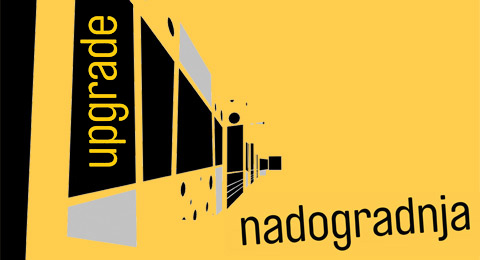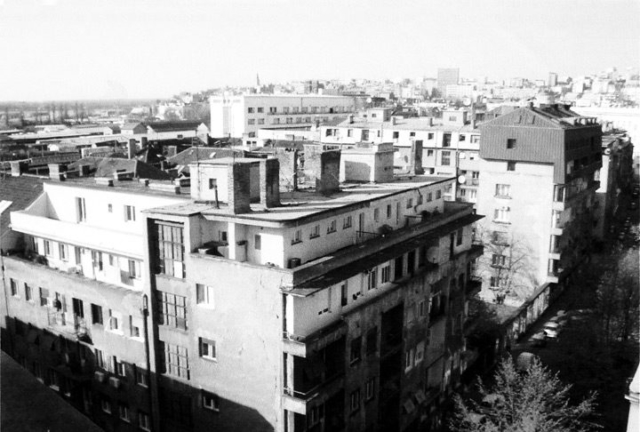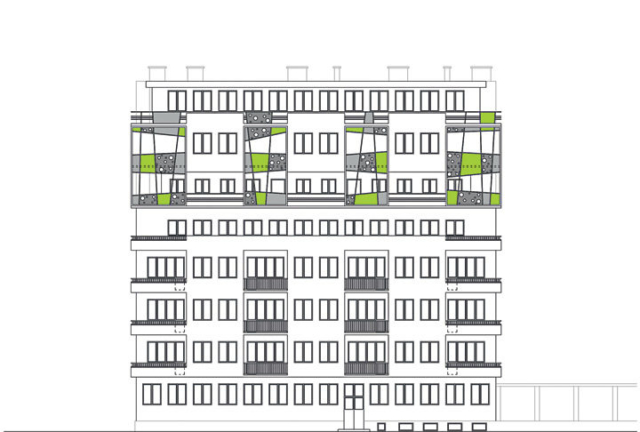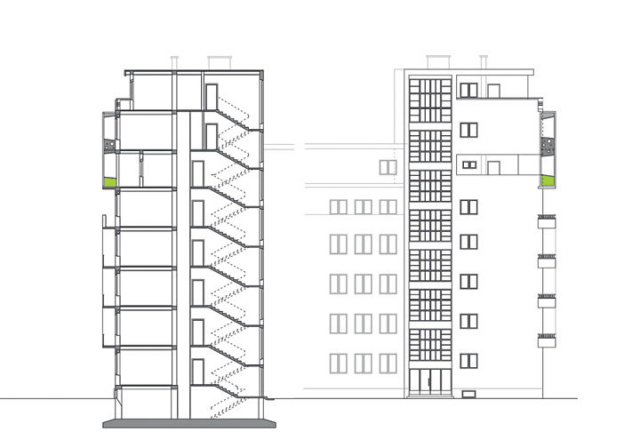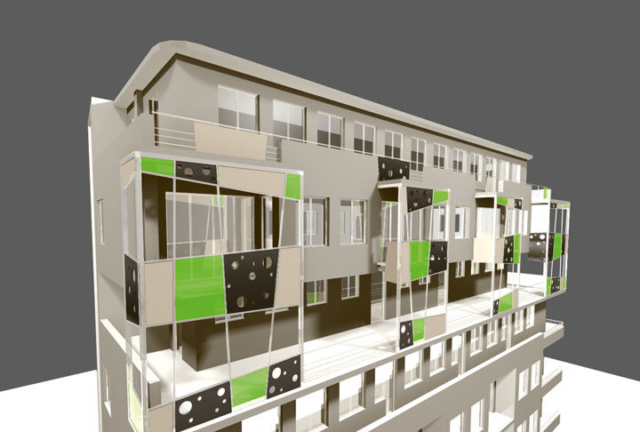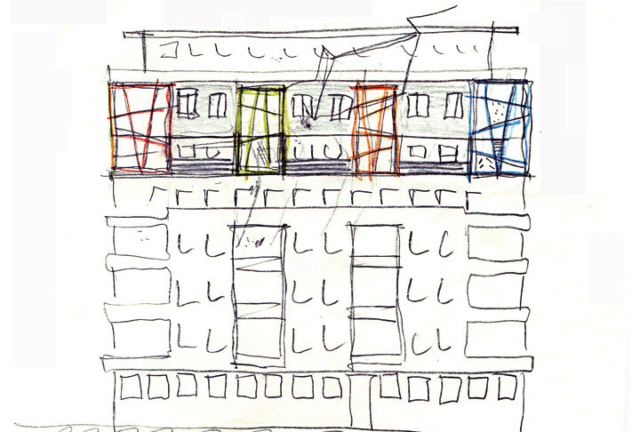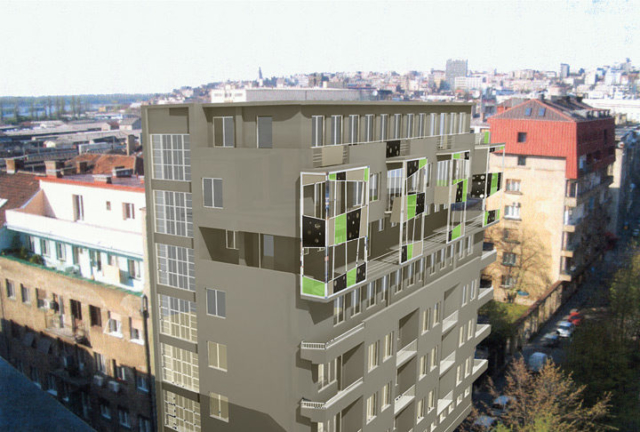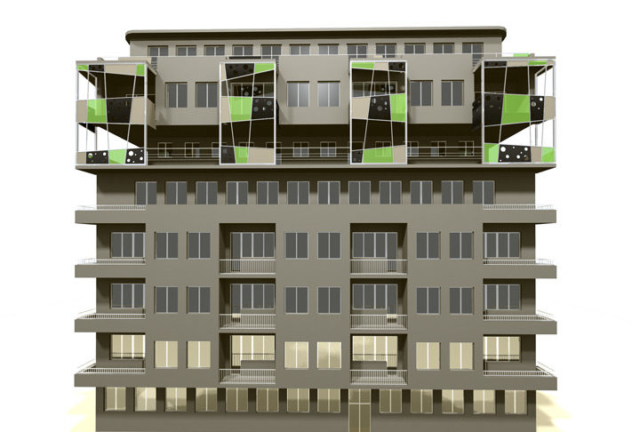Projekat dogradnje stambenog objekta, ul. Dr Aleksandra Kostića 16, Beograd
Autor: Dia Ela Nešić
projektovano 2008/9.
Kako učiniti arhitekturu „parazitskih“ intervencija na objektima kvalitetnom arhitekturom? To je verovatno jedan od najvećih izazova koji se nametnuo arhitektama, naročito u Beogradu u zadnjih dvadesetak godina. Nadogradnja starih objekata u Beogradu je najučestaliji vid arhitektonske intervencije, samim tim i najveća šansa za arhitekte da grad učine drugačijim u pozitivnom smislu. Arhitekta Ela Nešić iz Beograda je autor projekta nadogradnje koji sadrži sve parametre vrhunske arhitekture i sa matičnim objektom čini posebnu celinu u kojoj „parazit“ i „matica“ imaju uspešno definisan međusobni odnos.
Predmetni ugaoni objekat, kao i identičan desni ugaoni sused, datira iz 1953. godine. Projektovani su u duhu modernizma, kao vizuelna celina, koja sačinjava jedinstveni front bloka iz Ulice Dr Aleksandra Kostića i markiraju uglove bloka. Nestručnom dogradnjom desnog suseda, devedesetih godina prošlog veka, kao i značajnim dogradnjama u neposrednom okruženju izmenjena je volumetrija samog bloka i njegove bliže okoline, čime je predmetni ugaoni objekat izgubio prvobitno svojstvo akcentovanja ugla bloka, i u volumetrijskom i oblikovnom smislu.
Kako bi se uspostavio narušeni volumetrijski balans, objekat se referisao visinski na faktičko stanje bližeg okruženja, dok je po svim drugim aspektima, dati predlog radikalno drugačiji od desnog suseda, jer autor smatra da su njegova arhitektura, primenjeni materijali i opšti utisak neprimereni u svakom smislu. Pri konceptu oblikovanja arhitektonskog rešenja predmetne dogradnje, namera je bila da se isprate i povežu suštinski elementi donjih (postojećih) etaža u smislu proporcija, ritma i opšte geometrije postojeće tipično modernističke fasade, ali upotrebom transparetnih i nenametljivih elemenata (čelične strukture, staklo, aluminijumski lim – ograde terasa), savremeno oblikovanih, tako da se dobije utisak lakoće gornjih etaža.
Design for extension of a residential building, 16 Dr Aleksandra Kostića Street, Belgrade
Author: Dia Ela Nešić
Designed 2008/9
How to create a „parasite“architecture intervention made on buildings be more quality architecture? That is probably one of the greatest challenges imposed on architects, especially in Belgrade in the past two decades. Extension of old buildings in Belgrade represents a most frequent type of architectural interventions, and therefore, the biggest chance for architects to make the city different in a positive sense. Architect Ela Nešić from Belgrade is the author of extension designs containing all parameters of a high-class architecture, which make a special ensemble with the matrix building wherein a „parasite“ and a „matrix“ have a successfully defined mutual relation.
The subject angular building, like the identical right-hand side angular neighbour, dates back to 1953. They were design in a spirit of modernism, being a visual entity, which make a unique front of a block from Dr Aleksandra Kostića Street and they make the angles of the block. By an unprofessional extension of the right-hand side neighbour, in the 90s of the past century, as well as significant extensions in the close environment, the volumetric character of the whole block was changed, along with its close environment. By that, the subject building has lost its initial characteristic of putting the emphasis on the angle of the block both in volumetric and shape-like sense.
In order to restore the damaged volumetric balance, the building was reconstructed in terms of its height in line with the factual state of its close environment, while regarding all the other aspects, the given proposal radically differs from the right-hand side neighbour, because the author considers that its architecture, applied materials and general impression are inappropriate in all senses. In the concept of shaping an architectural solution for the subject extension, the intention was to follow and connect the crucial elements of the lower (existing) floors in terms of proportions, rhythm and, in general, geometry of typically modernistic existing facade, but through the use of a more transparent and non-intrusive elements (steel structure, glass, aluminium tin – fences of terraces), shaped in a modern way, so that one can get an impression of a lightness of the upper floors.


